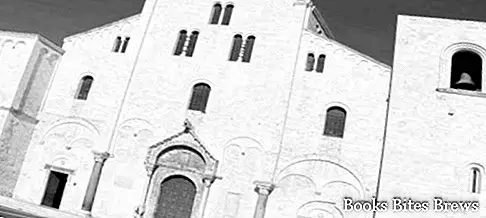What to see in Bari, one-day itinerary, including the main monuments and places of interest, including Basilica of San Nicola, Cathedral of San Sabino, Federico II Castle, Fiera del levante, archaeological museum, botanical garden and provincial art gallery .
Tourist information
Capital of Puglia, Bari was already inhabited in prehistoric times, it was also an important Roman municipality, which passed after the Eastern Empire first and then the Saracens and Byzantines.
In the second half of the year 1000 it was conquered by the Normans, followed by the Angevins and the Aragonese.
It was submitted to the Spanish viceroyalty until it became an Austrian possession between 1707 and 1738, before falling under Bourbon rule.
Starting in 1813, during the Napoleonic period, the city was enlarged considerably from a city with a classic medieval urban layout to a city with a modern conception.
The route starts from Corso Vittorio Emanuele, where the town hall and the prefecture's palace are located, and develops through the Imperatore Augusto promenade.
In Largo Urbano II there is the historical museum which displays objects from different eras, between the Risorgimento and the Great War.
Turning left you enter the medieval nucleus, until you reach Piazza 62 Marinai where there is the Church of San Gregorio, one of the oldest in the city, characterized by an interior with three naves with columns with capitals of excellent workmanship.
Turning left you reach the Basilica of San Nicola di Bari, located in Piazza Elia, a wonderful example of Apulian Romanesque architecture, consecrated in 1197 and built with the specific purpose of hosting the remains of the city's patron saint.
The façade, divided into three parts by pilasters resting on columns, shows a crowning with arches and is open with mullioned windows, mullioned windows and three portals, of which the middle one, enriched with reliefs, includes two fountains on the sides, while two towers imposing delimit the front of the church.
In the interior with three naves, the fifteenth-century arches stand out, placed sideways at the beginning of the central nave, in addition to the triple-lancet gallery and the seventeenth-century ceiling made of gilded wood.
Recommended readings- Trani (Puglia): what to see
- Puglia: Sunday day trips
- Manfredonia (Puglia): what to see
- Vieste (Puglia): what to see
- Altamura (Puglia): what to see
The main works of art include the silver altar dedicated to San Nicola, located in the right transept, the Virgin between Saints Nicola and Giovanni in the apse on the right, the fifteenth-century triptych by Rico da Candia, the ciborium on four columns with carved capitals from 1150 placed on the high altar, the funeral monument of Bona Sforza, in the main apse, and the Madonna with the Saints, a work by Vivarini of 1476 placed in the apse on the left.
Very interesting is the large crypt, where you can admire remarkable carved capitals.
The matronei house the museum which preserves, among relics and various works, the precious thirteenth-century enamel copper, depicting Roger II crowned by San Nicola.
What see
Once you exit the basilica of San Nicola, turning left, you will quickly reach the Cathedral of San Sabino, whose origins date back to 1200.
It is a remarkable example of elegant Apulian Romanesque style.
The facade, divided by pilasters and decorated with a series of small arches, culminates with the rose window and a series of windows.
Very interesting are the octagonal lantern, with oriental-style friezes, the fronts of the transept with mullioned windows and rose windows, the rectilinear apse, where a richly carved window stands out, the sixteenth-century portico on the left side and the trulla, corresponding to the current sacristy.
Inside there is a large crypt and other very interesting works.
In the archives of the Cathedral, valuable codes are kept, including the famous Exultet from the year one thousand, while in the adjacent museum are works of art from the cathedral and other churches of the diocese of Bari.
By continuing to walk in the direction of Gran Porto, you reach the Castle in Piazza Federico II, a fortification built by the emperor in 1233.
Mostly renovated in the early 1500s, this building has a trapezoidal plan with towers placed at the corners and a central courtyard.
Inside a room located on the ground floor there is the plaster cast collection including the casts of numerous sculptural and architectural parts of the major Apulian Romanesque buildings.
Continuing along Corso Vittorio Veneto you arrive first at the provincial aquarium, located near Molo Pizzoli, then you reach the large neighborhood of the Fiera del Levante, an event established in 1930.
In the area there is the beach of San Francesco all'Arena.
Going back you enter the nineteenth-century part of the city, precisely in Piazza Umberto I where the interesting archaeological museum is located, containing numerous finds, especially bronze and ceramic objects.
Continuing towards Taranto, you reach, in via Amendola, the botanical garden and the museum of zoology and comparative anatomy.
In the city center it is interesting to pay a visit to the provincial art gallery, where remarkable works of art made between the eleventh and twentieth centuries are collected.




